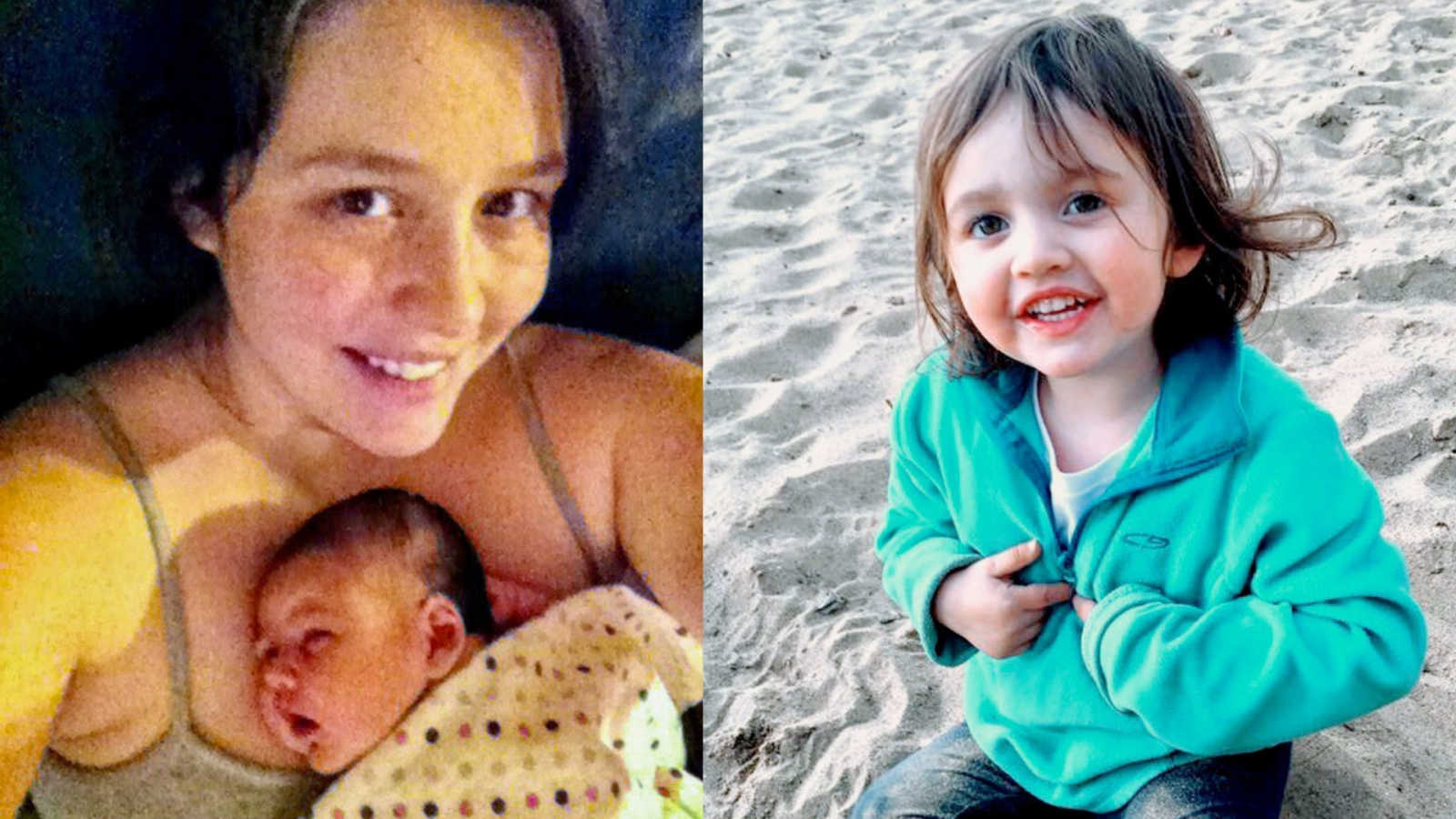“I was 34 years old when I died, and I faced my death laughing at the absurdity that I had plans, plans that would now never happen, and how silly I was for thinking what I wanted out of life even mattered at all in the grand scheme of things.
When my daughter was born, she was perfect. She took entirely too long to get here, which should have been an early indication she would tackle life in her own terms and on her own timeline. She was very late, so much so that I ran out of amniotic fluid and had to be induced. Forty hours of Pitocin and morphine later, Bitsy was here. She was so very tiny and didn’t want to eat anything other than her hands.
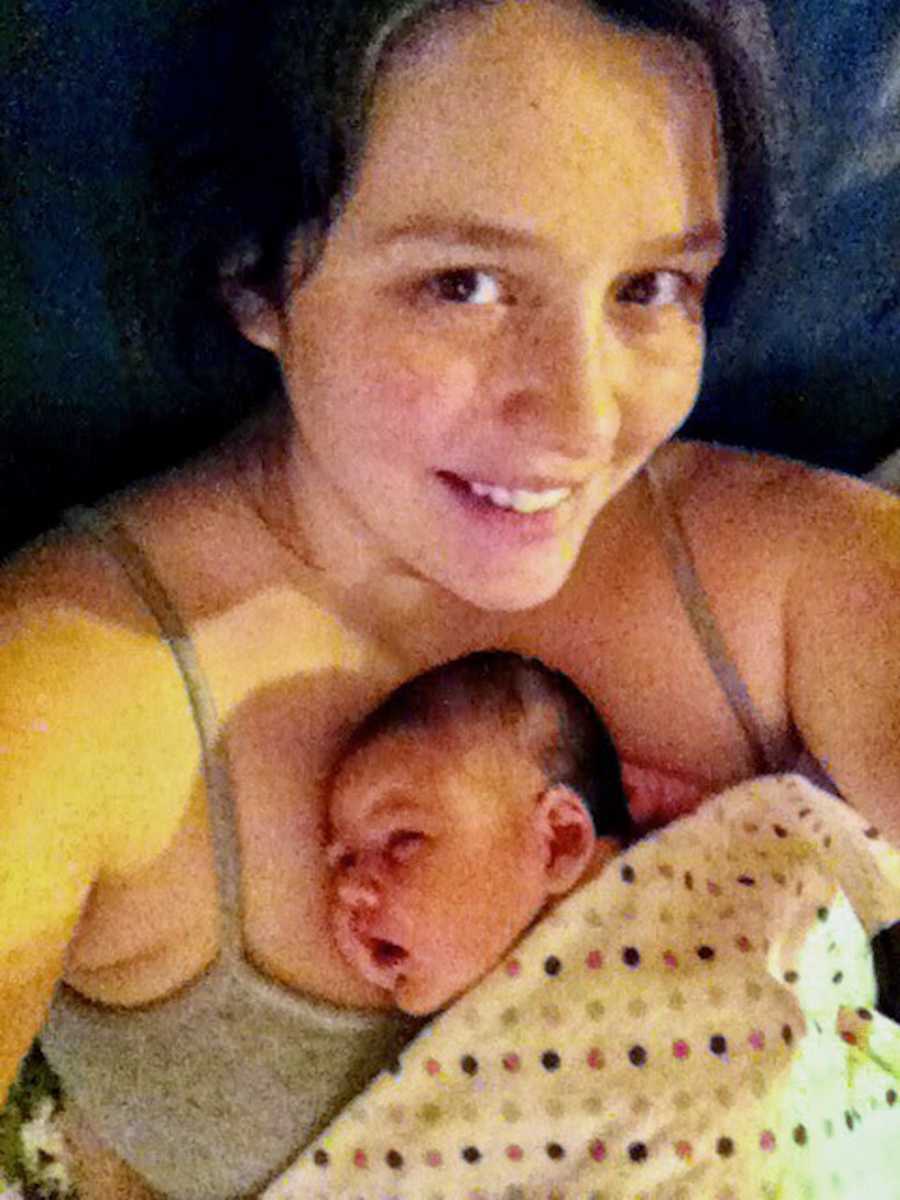
When she was two, she wasn’t speaking, and wasn’t acting like the other two-year-old we knew. So, we took her to get evaluated by a speech therapist. Everyone I knew told me I was crazy, every kid is different, and there’s nothing wrong with her. The speech therapist said the opposite. She was so grossly delayed they wanted her in their office five days a week. I could not afford five days a week, so we went to a local charity organization called Easter Seals that helps disabled children and got services twice a week there. We then got her into occupational therapy. And we did this for two years and saw no progress. We enrolled her in early intervention preschool, because she was so grossly delayed. Everyone around us, they meant well, they were just trying to be comforting, but they were very wrong. There was something wrong with my child, we just didn’t know what.
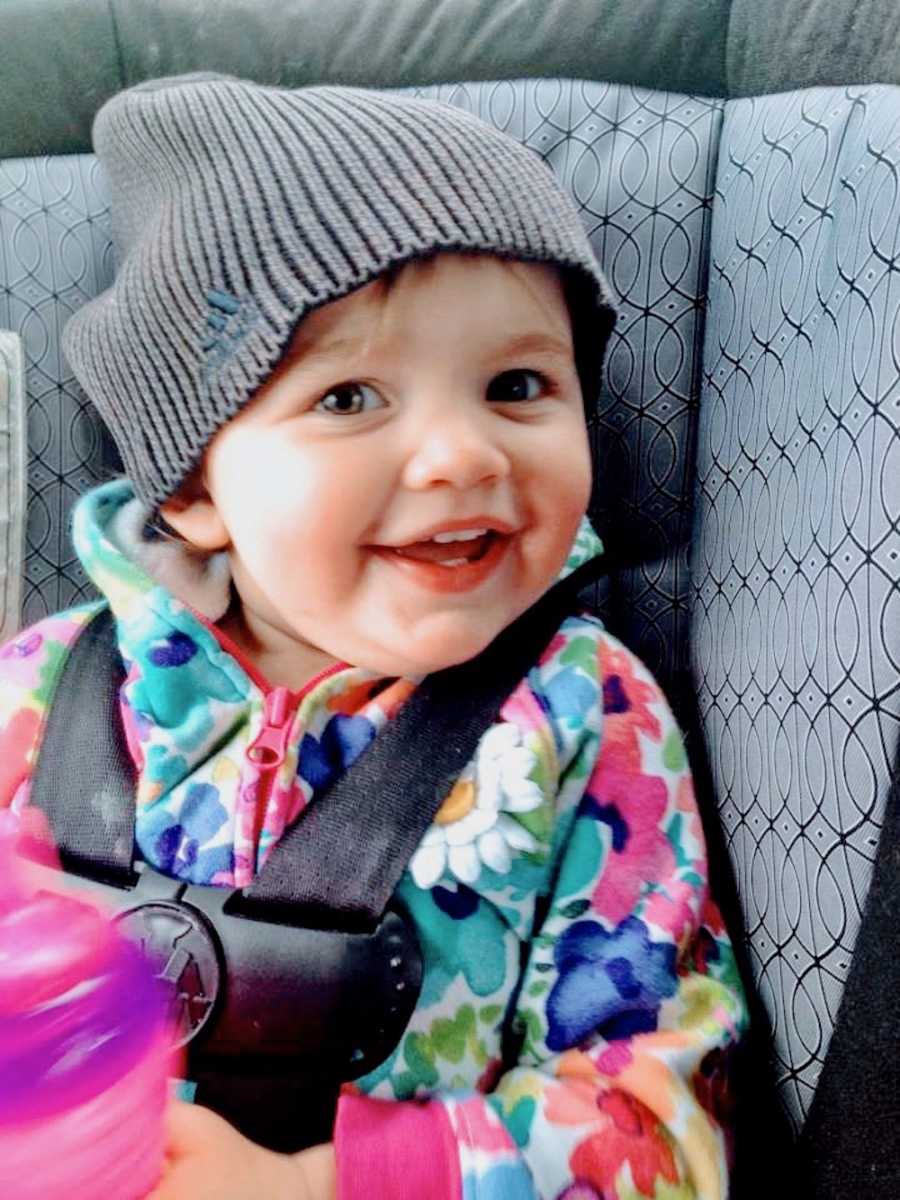
I dropped Bitsy off at preschool and the school nurse called me on my way to work. ‘Are you driving?’ she asked, ‘You might want to pull over.’ I, being the ever-cocky millennial, I am, assumed she was being overly cautious and told her I was pulled over, but kept driving. ‘I think your daughter is having seizures. I think she has epilepsy.’ There was a long pause as I pulled over, no longer cocky and full of myself. ‘Excuse me?’ I replied. ‘I need you to get her into a neurologist as soon as possible to get her evaluated for epilepsy.’ She said. I don’t remember the rest of the conversation. I don’t remember asking people for recommendations, I don’t remember calling and scheduling an appointment. I don’t remember anything leading up to the appointment. Work, life, commute, fun: nothing. It’s all a blank memory during this time. My husband and I go to the appointment and meet with a very kind and soft-spoken neurologist. He orders up an EEG, and we go home and prep for an EEG. Prepping for an EEG means you wake the child up at 3 a.m. and don’t let them go back to sleep. When we get into the EEG, the nurses connect nodes to Bitsy’s head, through her screams of terror and protest. They flashlights at her and read her brain signals and allow her to finally go to sleep and monitor her brain activity.
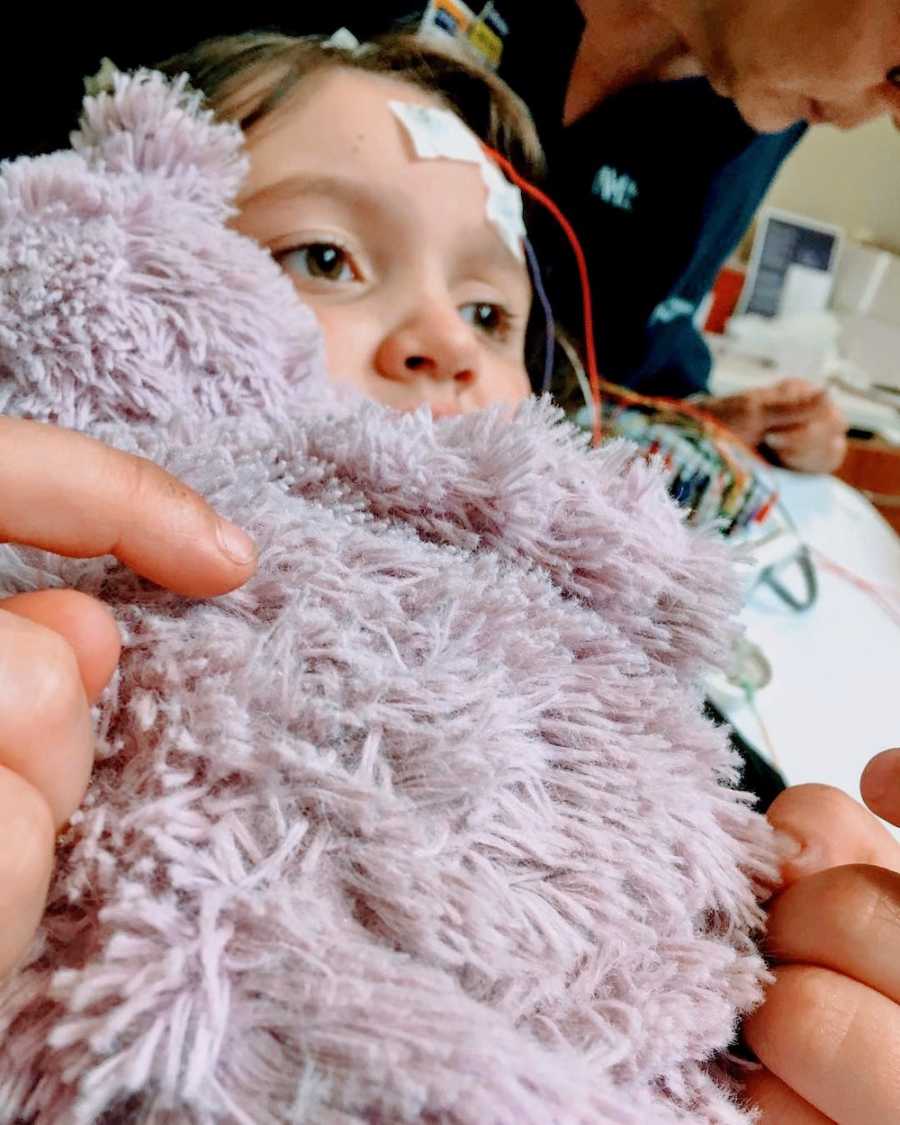
When she is done with the EEG, the soft-spoken neurologist takes us into his office and tells us Bitsy has epilepsy. She’s having seizures – hundreds of seizures an hour. We just can’t see them because they are seconds long. She blips in and out of consciousness constantly. And I, having been awake since 3 a.m. with a cranky preschooler, and having just found out my child was having hundreds of seizures an hour and I never noticed, break down into sobs. I cannot stop sobbing. Loud, obnoxious, mournful sobs. When I finally compose myself, the neurologist tells us that we need to get an MRI done, to ensure that my daughter doesn’t have a brain tumor, which could potentially be causing the seizure patterns we are seeing on the EEG. I am no longer sobbing. I am numb. The neurologist tells us that when we do the MRI, if we are allowed to leave the hospital afterwards, it means there’s no tumor, and she will be ok. If we aren’t, and she is checked in fully to the hospital, to ready ourselves, because it’s going to be a long battle. The neurologist tells us that we need to be prepared that there is a possibility she may never leave the hospital.
We drive home and try to prep her for the MRI that is happening in two days. For the first time in my entire life, I do not google, I do not prepare myself emotionally and mentally for what is coming. I don’t want to. It was bad enough to find out about epilepsy, but epilepsy and a brain tumor was too much for me to handle. I think my brain decided to just check out, set my bodily functions to auto-pilot, and took off for the day.
The following day I went to an emergency counseling session because I knew I could not cope with this alone. My husband turns into a major a**hole when it comes to medical emergencies – he barks orders, he flips out, he sounds angry all the time. Not everyone is meant for a high-stress medical field and I am very glad he figured out that he can’t handle that level of stress early on in life. But it also meant I couldn’t talk to him about what I was feeling or scared of. The last thing I needed was to have him act out towards me while I was at my most vulnerable. This is a terrifying, life threatening situation. He was scared and angry, and so was I.
The counselor advised me to write my Neil Armstrong has Died on the Moon Speech. When the Saturn V rocket blasted off from earth, Nixon’s speech writers had pre-written a speech for any situation that may arise. Their plan was to pre-write the speeches, and then slightly edit them so Nixon could go on the air quickly in the event of disaster, since the entire world was watching. William Safire wrote the speech based off of the idea that the astronauts would never be able to make it off the moon – if they died, it would likely be by being marooned on the moon. It was the worst-case scenario of all worst-case scenarios – being marooned to die on the moon’s surface, alone. The counselor told me to write down the worst-case scenario, and what I would like to say to my friends and family. That way I could face it once, privately, before I possibly would have to face it publicly. I could better compose myself in front of my husband and daughter.
So, I wrote the speech. I wrote it in a conference room at my work while crying uncontrollably. After writing it, I vomited into a garbage can, cleaned myself up, and went back to work.
I do not recommend this method of coping.
We went into the MRI, and they allowed us to stay with Bitsy while they drugged her, and the anesthesia set in. She went to sleep, and we went to the waiting room. And in this waiting room of the pediatric neurology wing of a hospital is where I finally die.
I knew what Bitsy’s life was going to be like. I knew what my life was going to be like. I am a planner, I planned out everything the second I knew she was going to be with me. I would start a college fund, she would go to a state school, study something useful, graduate on time, maybe get married maybe not. I would send her to Europe over the summer and buy her a reliable car for her graduation. I had a plan, and that plan was set in motion the second she was born.

There’s a point during a stressful situation, where you know the outcome could be good, or could be so bad most people don’t even think of it. No one thinks about a child dying from a brain tumor or brain cancer. No one talks about it.
I started laughing. Uncontrollable, loud, can’t breathe, wheezing laughter. I knew, no matter what happened in the MRI, there was no plan I could make for that. All the plans I had made before were now null and void because I didn’t plan for this. I was so worried about whether or not she got enough vegetables in her diet I forgot to enjoy the moments where she’s rubbing spaghetti in her hair. The planner, the worrier, the woman who was always put together and wore pearls, the woman who had a plan for everything? She died. She never left that hospital. I chose to live my life with joy from that moment on. Things weren’t going to plan, and I was ready to roll with it.
The nurse came to get us and lead us to where Bitsy was recovering. We got in the room as she was waking up. I was just so overjoyed to see her, to hold her little hand, to smell her little head, I forgot to ask if she had a brain tumor.
Bitsy did not have a brain tumor, we were allowed to leave the hospital that day. I floated out of the hospital, at least that’s what it felt like. It was a euphoria I have never felt before. She was in the wheelchair the hospital makes you ride in when being released, and my husband was pushing her, and I was running around them like an overly excited chihuahua. We got outside into the crisp, fall air, and I breathed in hard until my lungs burned. We went and got pancakes and strawberry crepes. The new me was so very happy the old me was left in that hospital.
Bitsy does have epilepsy that we are working to cure her of. I never, in a million years, expected to possibility cure her of this disease. If we don’t cure her, it will be fine too. She is controlling seizures with medication, and now is getting caught up to the rest of her peers. She has been diagnosed with autism, as her type of epilepsy goes hand-in-hand with autism. She’s vivacious, she’s happy, she’s energetic, and she’s not marooned on the moon. And now, neither am I.”
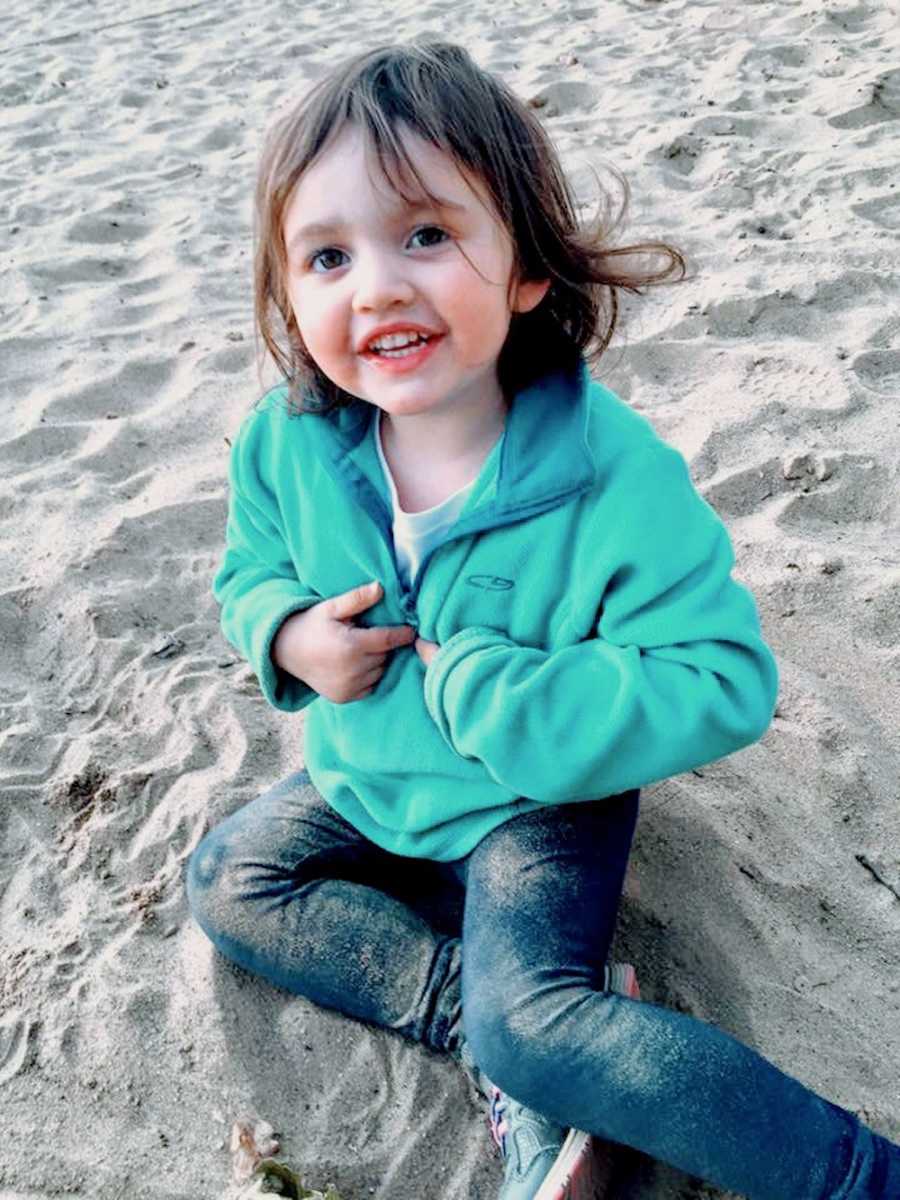
This story was submitted to Love What Matters by Anne Marie Williams, 36, of Chicago, Illinois. Follow her journey on Instagram here and her website here. Do you have a similar experience? We’d like to hear your important journey. Submit your own story here. Be sure to subscribe to our free email newsletter for our best stories, and YouTube for our best videos.
Read more about epilepsy:
Provide hope for someone struggling. SHARE this story on Facebook with family and friends

